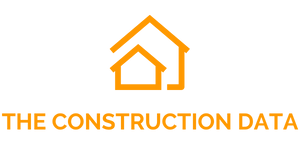
Orbia Q1 2025 Earnings Announcement
Orbia Advance Corporation, a global leader in specialized solutions across various sectors, today announced its unaudited financial results for the first quarter of 2025, demonstrating resilience and strategic progress amidst evolving market dynamics.
The company reported an EBITDA of $198 million for the first quarter of 2025. After adjusting for specific non-recurring items, including legal and restructuring costs and the impact of a raw material supply disruption, Orbia’s Adjusted EBITDA reached $260 million, marking a positive 3% increase compared to the same period in the previous year.
First Quarter 2025 Key Financial Highlights:
- Net Revenues: $1,811 million, a 3% decrease year-over-year, primarily due to lower revenues in Polymer Solutions and Building & Infrastructure, partially offset by growth in Fluor & Energy Materials and Precision Agriculture.
- Reported EBITDA: $198 million, a 21% decrease compared to Q1 2024, mainly impacted by the performance of Polymer Solutions and Building & Infrastructure.
- Adjusted EBITDA: $260 million, a 3% increase year-over-year.
- Operating Cash Flow: An outflow of $22 million, representing a significant $28 million improvement compared to the prior year, driven by effective working capital management and favorable currency fluctuations, which partially mitigated the impact of lower EBITDA.
Sameer Bharadwaj, CEO of Orbia, commented on the company’s first-quarter performance, stating, “Our first-quarter results demonstrate the resilience of our businesses across market cycles. Adjusted EBITDA for the quarter improved compared to the same period last year. Overall, our end markets were reasonably stable, with softness in some markets largely offset by stability and improvements in others. We remain focused on managing what we can control while exercising strong financial discipline in the current market environment.”
Mr. Bharadwaj further emphasized Orbia’s strategic priorities: “We continue to strengthen our leading market positions, make significant progress in cost optimization and non-core asset divestments, and improve our balance sheet—all to achieve our long-term strategic objectives.”
Detailed Financial Review:
Orbia’s net revenues of $1,811 million in Q1 2025 reflected varied performance across its business groups. The Polymer Solutions segment experienced a decline due to lower prices and an operational disruption affecting a key supplier. The Building & Infrastructure sector also saw a decrease in revenue, attributed to weaker market conditions in parts of Continental Europe and Mexico. However, these declines were partially counteracted by robust revenue growth in Fluor & Energy Materials and Precision Agriculture. The Building & Infrastructure segment saw positive contributions from Brazil, the U.K., and its new manufacturing facility in Indonesia.

The cost of goods sold for the quarter amounted to $1,417 million, a 1% decrease compared to Q1 2024. This reduction was primarily driven by the positive impact of cost-saving initiatives and enhanced operational efficiencies, which partially offset the adverse effects of the raw material supply disruption.
Selling, general, and administrative expenses increased by 8% to $353 million in the first quarter. As a percentage of sales, SG&A rose by 198 basis points to 19.5%. This increase was mainly due to unfavorable legal and restructuring costs. Excluding depreciation and these specific costs, SG&A actually decreased by $16 million.
EBITDA for the quarter decreased by 21% to $198 million, resulting in an EBITDA margin of 11.0%, a 261 basis point decline. However, the Adjusted EBITDA of $260 million represented a 3% increase, with an adjusted EBITDA margin of 14.4%. The difference between reported and adjusted EBITDA highlights the impact of the non-operating costs and the raw material supply disruption on the company’s underlying profitability.
Financial costs decreased significantly by approximately $63 million year-over-year to $76 million in Q1 2025. This improvement was primarily due to a shift from a foreign exchange loss in the prior year to a slight gain in the current year, along with a positive impact from derivative financial instruments.
Orbia recognized an income tax benefit of $5 million in the first quarter, compared to an income tax expense of $15 million in the same period last year. The effective tax rate for the quarter was 13.3%. Excluding certain discrete factors, the underlying effective tax rate was 3.2%.
The net loss to majority shareholders improved by $20 million to $54 million in the first quarter. This improvement was driven by lower financial costs and taxes, which partially offset the decrease in operating income.
Operating cash flow showed a significant improvement, with an outflow of $22 million compared to an outflow of $50 million in the prior year. Similarly, free cash flow improved to negative $155 million from negative $201 million. These improvements were primarily due to effective working capital management, positive currency fluctuations, and lower capital expenditures, despite the lower EBITDA.
Net debt stood at $3,826 million, including total debt of $4,686 million and cash and cash equivalents of $860 million. The company’s net debt-to-EBITDA ratio increased from 3.30x to 3.67x compared to the end of 2024. Using adjusted EBITDA, the net debt-to-EBITDA ratio increased from 3.04x to 3.23x.
Regional Revenue Performance:
- North America: Revenues decreased by 9% to $613 million, representing 34% of total revenue.
- Europe: Revenues remained stable at $585 million, accounting for 32% of total revenue.
- South America: Revenues increased by 5% to $394 million, contributing 22% to total revenue.
- Asia: Revenues decreased by 3% to $171 million, representing 9% of total revenue.
- Africa and Others: Revenues decreased by 10% to $48 million, accounting for 3% of total revenue.
Business Group Performance:
- Polymer Solutions: Revenues decreased by 9% to $600 million. EBITDA decreased by 34% to $57 million, and adjusted EBITDA decreased by 19% to $70 million, impacted by weak pricing and the raw material supply disruption.
- Building & Infrastructure: Revenues decreased by 6% to $586 million. EBITDA decreased significantly by 43% to $37 million, while adjusted EBITDA decreased by 2% to $64 million, affected by market weakness in Europe and Mexico and restructuring costs.
- Precision Agriculture: Revenues increased by 6% to $271 million. EBITDA increased by 16% to $33 million, and adjusted EBITDA increased by 28% to $37 million, driven by strong performance in Brazil and Peru and cost-saving efforts.
- Fluor & Energy Materials: Revenues increased by 14% to $216 million. EBITDA increased by 18% to $64 million, driven by higher refrigerant volumes and stable upstream mineral prices.
- Connectivity Solutions: Revenues decreased slightly by 1% to $194 million. EBITDA increased by 12% to $26 million, driven by higher volumes, favorable input costs, and cost savings.
Balance Sheet, Liquidity, and Capital Allocation:
Orbia’s net debt-to-EBITDA ratio increased year-over-year due to a reduction in the last twelve months’ EBITDA and an increase in net debt. The company held $860 million in cash at the end of the quarter. In April 2025, Orbia issued long-term notes in the Mexican debt market for approximately $300 million to refinance existing debt. Working capital increased seasonally, and capital expenditures decreased by 20% year-over-year to $105 million, reflecting a focus on essential maintenance and high-priority growth projects.
2025 Outlook:
Considering the current business environment, Orbia anticipates an adjusted EBITDA in the range of $1,100 – $1,200 million for 2025. Capital expenditures will be actively managed to approximately $400 million or less, prioritizing safety, operational integrity, and near-revenue growth projects. The company estimates an effective tax rate of 27% to 31% for 2025, excluding certain discrete items and foreign exchange rate changes in Mexico.
Orbia outlined specific expectations for each of its business groups, focusing on navigating market challenges through cost optimization, strategic growth initiatives, and maintaining financial discipline to achieve its long-term objectives. The company remains committed to strengthening its market positions and delivering sustainable value to its stakeholders.




